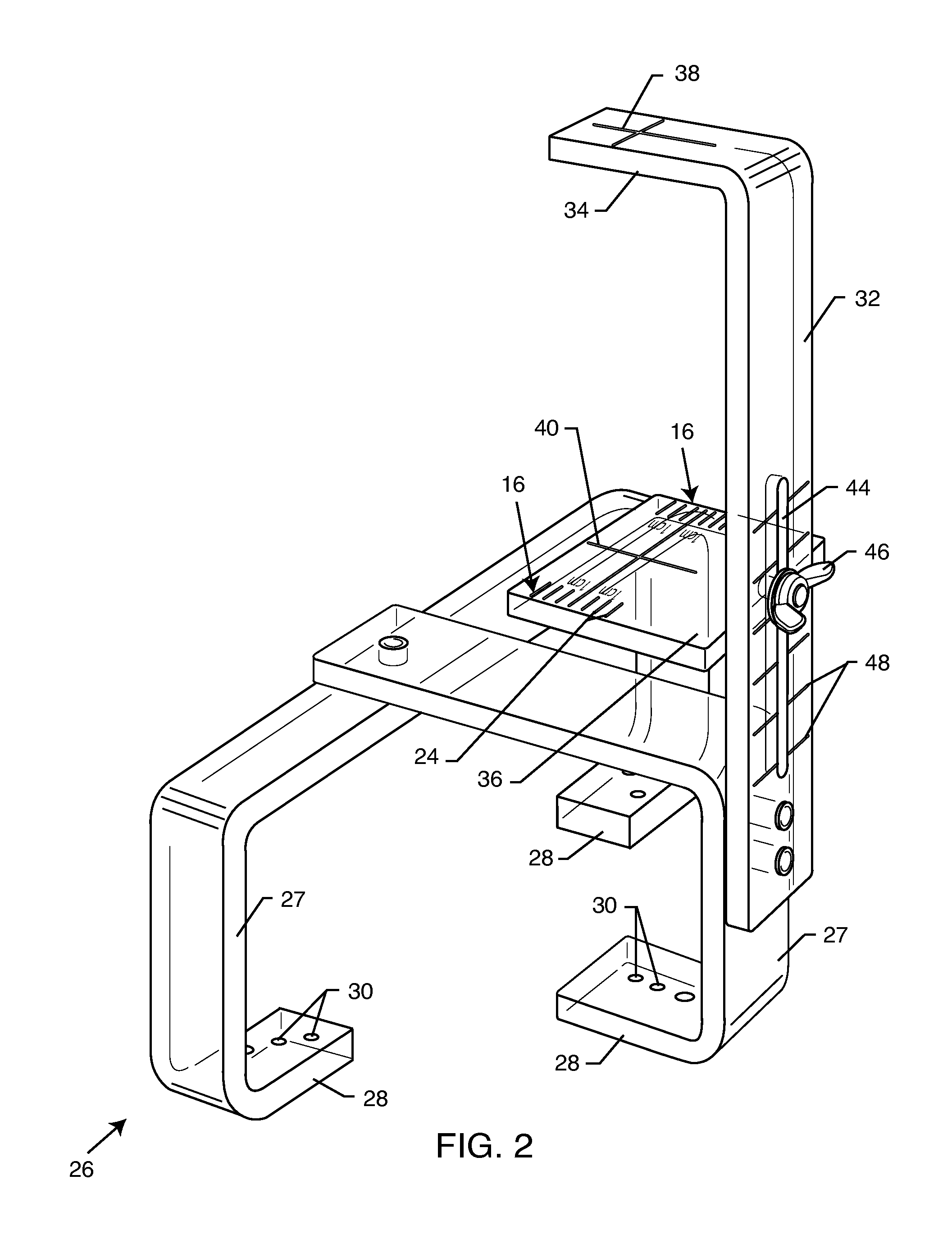Alignment fixture for x-ray images
a technology of alignment fixture and x-ray image, which is applied in the direction of radiation beam directing means, medical science, diagnostics, etc., can solve the problems of inability to physically locate the ruled grid at the same vertical plane as the patient's anatomical region, prior art devices and systems that require undue estimation, and the actual placement of the ruled grid in relation to the anatomical region of interest subject to an unacceptable margin of error, so as to achieve quick and easy x-
- Summary
- Abstract
- Description
- Claims
- Application Information
AI Technical Summary
Benefits of technology
Problems solved by technology
Method used
Image
Examples
Embodiment Construction
[0023]As shown in the exemplary drawings, an improved alignment fixture referred to generally by the reference numeral 10 in FIGS. 1-2 and 4-8 is provided for taking an X-ray image 12 (FIG. 9) of a patient 14 (FIGS. 3-6). The alignment fixture 10 is particularly designed for taking an X-ray image 12 preparatory to a prosthesis installation surgery (although FIG. 9 shows a pair of hip replacement prostheses 13 already installed), so that a prosthesis 13 of the correct size can be selected with confidence prior to the surgical procedure. In this regard, the alignment fixture 10 positions at least one radio-opaque ruled grid 16 at a selected vertical position above the patient 14, in accordance with the specific measured thickness (FIG. 4) of a selected anatomical region of the patient 14, such as the pelvic region in the case of a hip replacement patient. The vertical position of the ruled grid 16 is adjustably selected to overlay the selected anatomical region, such as a hip joint or...
PUM
 Login to View More
Login to View More Abstract
Description
Claims
Application Information
 Login to View More
Login to View More - R&D
- Intellectual Property
- Life Sciences
- Materials
- Tech Scout
- Unparalleled Data Quality
- Higher Quality Content
- 60% Fewer Hallucinations
Browse by: Latest US Patents, China's latest patents, Technical Efficacy Thesaurus, Application Domain, Technology Topic, Popular Technical Reports.
© 2025 PatSnap. All rights reserved.Legal|Privacy policy|Modern Slavery Act Transparency Statement|Sitemap|About US| Contact US: help@patsnap.com



